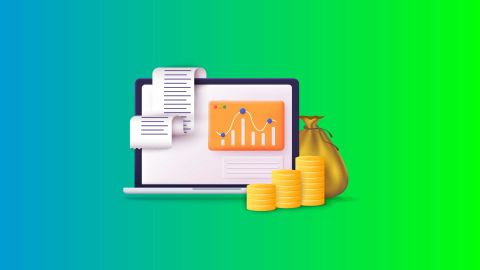When it comes to investing a significant amount in one go, timing and planning are everything—especially in a dynamic market like India. Whether you're a seasoned investor or someone just starting out, knowing when and how to invest a lump sum in mutual funds can make a huge difference in your financial journey.
A lump sum approach might bring in higher returns than staggered investing, but it also carries higher risk. That is why your investment decisions should align with your long-term financial goals and comfort with risk not short-term market noise.
In this guide, we’ll help you understand how to make informed lump sum investments in mutual funds by evaluating market timing, sectoral opportunities, and risk-reducing strategies.
Best times for lumpsum investments in mutual funds
The Indian economy presents a variety of opportunities for those ready to make bold yet thoughtful investment moves. A lump sum investment in mutual funds means deploying a large capital amount all at once which can be highly effective, but only if done wisely.
Instead of relying purely on gut instinct or headlines, consider objective factors like market corrections, economic indicators (such as GDP, inflation, and interest rates), and sector-specific trends. For example, a downturn in the market may provide an entry point for value buying, while a budget announcement focused on infrastructure could signal opportunities in related funds.
Keep in mind: no time is truly perfect, but some times are better than others especially if your decisions are backed by long-term goals.
High-return mutual fund categories for smart investing
Have you ever wondered how much your mutual fund could grow over time? Discover potential returns with our SIP return calculator and Lumpsum calculator. Estimate your investment's future value now!
How to lower risks in mutual fund lumpsum investment?
Risk is inevitable, but there are smart ways to reduce its impact—especially when deploying a large amount in one shot.
Start with fund selection. Don’t just chase returns; look for funds that match your goals. For instance, large-cap funds offer more stability, while mid-cap or sectoral funds may carry higher return potential but more volatility.
Timing also matters. Entering the market during euphoric highs could leave you exposed, while corrections might offer a more attractive entry point. Another way to manage risk is by spreading your investment across sectors—such as healthcare, tech, or infrastructure—to cushion against sector-specific downturns.
And perhaps most importantly, think long-term. The longer your investment horizon, the greater your chances of riding out short-term volatility and benefiting from compounding growth.
Choosing the right funds
If you're planning to invest a big amount in mutual funds, the very first step is to choose the right mix of funds. Not every mutual fund is created equal—some focus on safety, some on aggressive growth, and others strike a balance.
For example, large-cap funds invest in well-established companies that tend to grow steadily. These are ideal if you want some peace of mind along with returns. Mid-cap funds, meanwhile, target medium-sized companies that might offer faster growth but come with more ups and downs. Then there are quant funds that rely on data and algorithms instead of human decisions—ideal if you believe in logic over emotion. And sectoral funds focus on just one industry, like pharma or tech, which can be powerful if timed right.
So, the key is to match the fund type with your comfort with risk and your financial goal—whether it’s safety, growth, or a bit of both.
Pick the right time
Market timing is tricky but it still plays a role when you’re putting in a big lump sum. The idea isn't to “predict the perfect day,” but to be smart about the broader market conditions.
For instance, when markets are down due to temporary bad news but the long-term outlook remains strong, that could be a good time to invest. You're essentially buying more units at a lower price. On the other hand, if the market is booming and prices are at record highs, it might be better to wait—or at least be cautious with how much you invest right away.
In short, don’t panic during lows and don’t get greedy during highs. Stay focused on your long-term plan and choose your entry point wisely.
Focus on growth areas
India’s economy is constantly evolving, and different sectors shine at different times. If you’re making a lump sum investment, one smart move is to look at where future growth might come from.
For instance, sectors like technology, healthcare, and infrastructure have shown strong potential in recent years. Government initiatives, demographic shifts, or even global trends can influence which sectors are expected to perform better.
That doesn’t mean you bet everything on one sector. Instead, you can allocate a portion of your investment to sectors with a promising outlook while keeping the rest diversified. This approach lets you tap into emerging opportunities without taking on too much risk.
One of the biggest advantages of lumpsum investing is the opportunity to stay invested for the long haul. Unlike SIPs, which space out your exposure over time, lumpsum investments put all your capital to work from day one. That’s where time becomes your biggest ally.
If you’re investing with a horizon of five years or more, you give your money enough breathing room to ride out short-term market fluctuations and benefit from compounding. Even if the market dips shortly after your investment, a long-term view can help you recover and grow past those phases.
It’s also easier to stay calm during market volatility when you know your investment goals are far ahead in the future—like buying a house, planning for retirement, or your child’s education. Patience, in this case, is more than just a virtue—it’s a growth strategy.
Spread it out
Lumpsum investing doesn’t mean putting all your money into one scheme or asset class. Spreading your investment across asset types like equity, debt, and hybrid funds helps lower overall portfolio risk. This is especially important in India’s dynamic markets, where sectoral and macroeconomic shifts can impact returns.
You can also spread across fund styles—some actively managed, others passive like index funds. This way, even if one part of your portfolio underperforms, others may compensate.
Think of it as not putting all your eggs in one basket. Diversification gives you a safety net and increases your chances of smoother returns over time, even when markets wobble.
Choose wisely
Just because you’re investing a large sum doesn’t mean you should rush into a decision. Fund selection should match your financial goals, risk profile, and investment horizon. For example:
Want steady growth with low risk? Large-cap or balanced advantage funds might suit you.
Willing to take calculated risk for higher potential returns? Mid-cap or flexi-cap funds could work.
Looking to capture niche market trends? Sectoral or thematic funds might be worth considering but only in small doses.
Things to take into account before investing in the best mutual fund for lumpsum investment
1. Putting a lot of money into it
Lumpsum investing is different from your regular SIP—it’s about deploying a big amount all at once. That’s why it requires a bit more homework. When you’re investing a large sum, you’re giving your money full market exposure from the beginning, which means both the risks and rewards show up faster.
Before taking the plunge, take a good look at the fund’s track record. How has it performed in different market cycles? What are its expense ratios and exit loads? Most importantly, does it align with your overall financial goals?
Being cautious upfront can protect you from surprises later.
2. The ideal choice for long-term investments
If you are planning to invest and forget, lumpsum works best when the time horizon is long ideally 5 years or more. The magic of compounding rewards those who can stay patient.
Let’s say you park Rs. 5 lakh today in a good mutual fund and leave it untouched for a decade. Over time, thanks to compounding and consistent market participation, that single decision could turn into a meaningful corpus for retirement, education, or other big milestones.
Short-term investors may find lumpsum investing too volatile. But if you’re in for the long haul, it can be a powerful way to grow wealth steadily.
3. Market timing
It’s tempting to try and time the market—buy low, sell high. But in reality, getting the perfect entry point is rare, even for seasoned investors. That said, there are still smarter times to invest than others.
When markets are correcting or going through short-term pessimism, that’s often when opportunities are hiding. Investing a lump sum when prices are down can mean buying more units at lower cost, increasing your gains when markets rebound.
On the flip side, putting in a large sum at market peaks can be risky. If you’re unsure, it’s better to stagger the amount or consult a financial advisor before diving in.
Key points
Look for low market prices and a good economic future to invest your large sum. Avoid times of high excitement to keep from overspending.
Invest in growing sectors and diversify to lower risk and use new market chances.
Big sums are best for those who can wait. Focus on strong basics and stick with your investments through market ups and downs for compound growth.
Diversify by putting your money in different assets to lower risk and smooth out bumps during unstable times.
Go with mutual funds that match your goals and risk level. Use a variety of fund types to spread out your investment and take advantage of different opportunities.
Watch your investments and market news closely. Regularly review and adjust your portfolio to manage risk and boost returns.
Conclusion
In India, investing a large amount at once can greatly increase wealth if done wisely and with care. By understanding the market, following economic trends, and putting together a diverse set of mutual funds that meet your financial goals, you can make the most of big investments in India's vibrant market. Always seek advice from financial experts and be patient and disciplined to deal with market changes and achieve lasting financial success.
Essential tools for mutual fund investors




